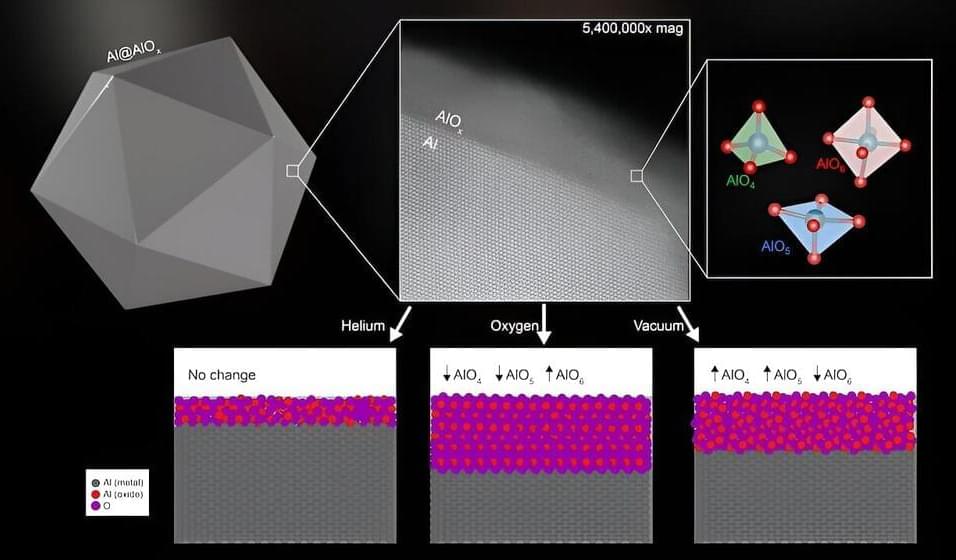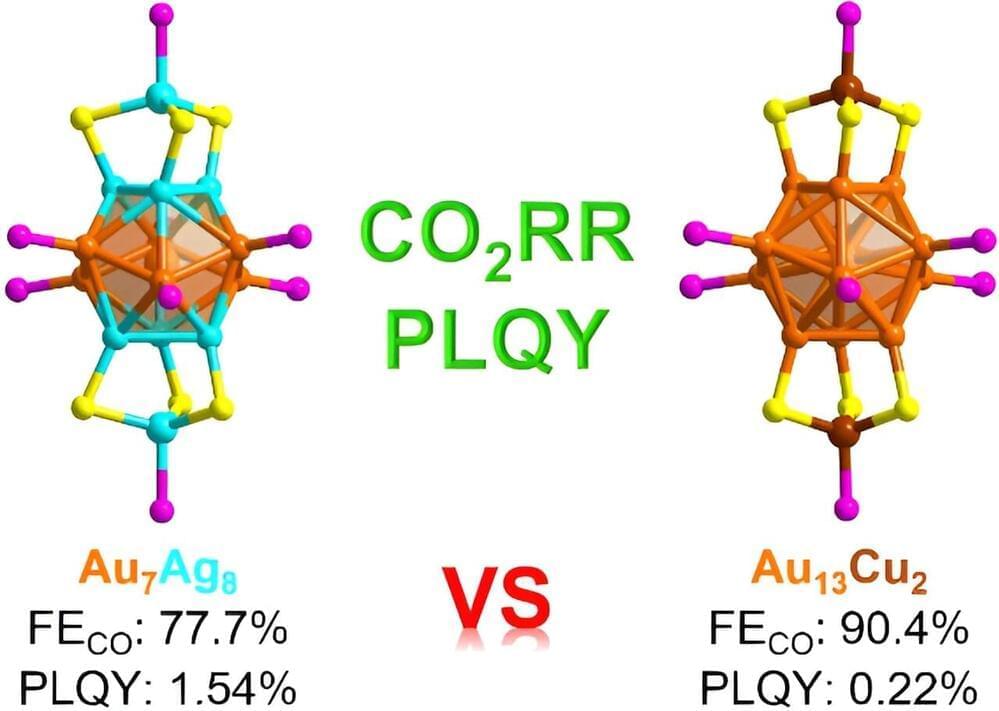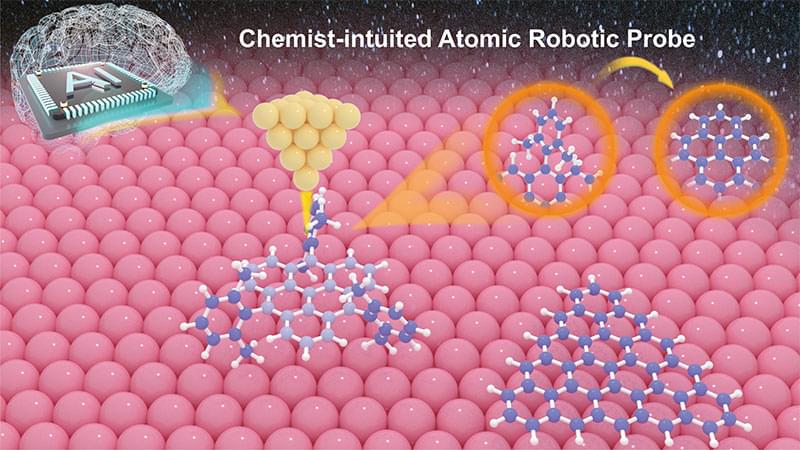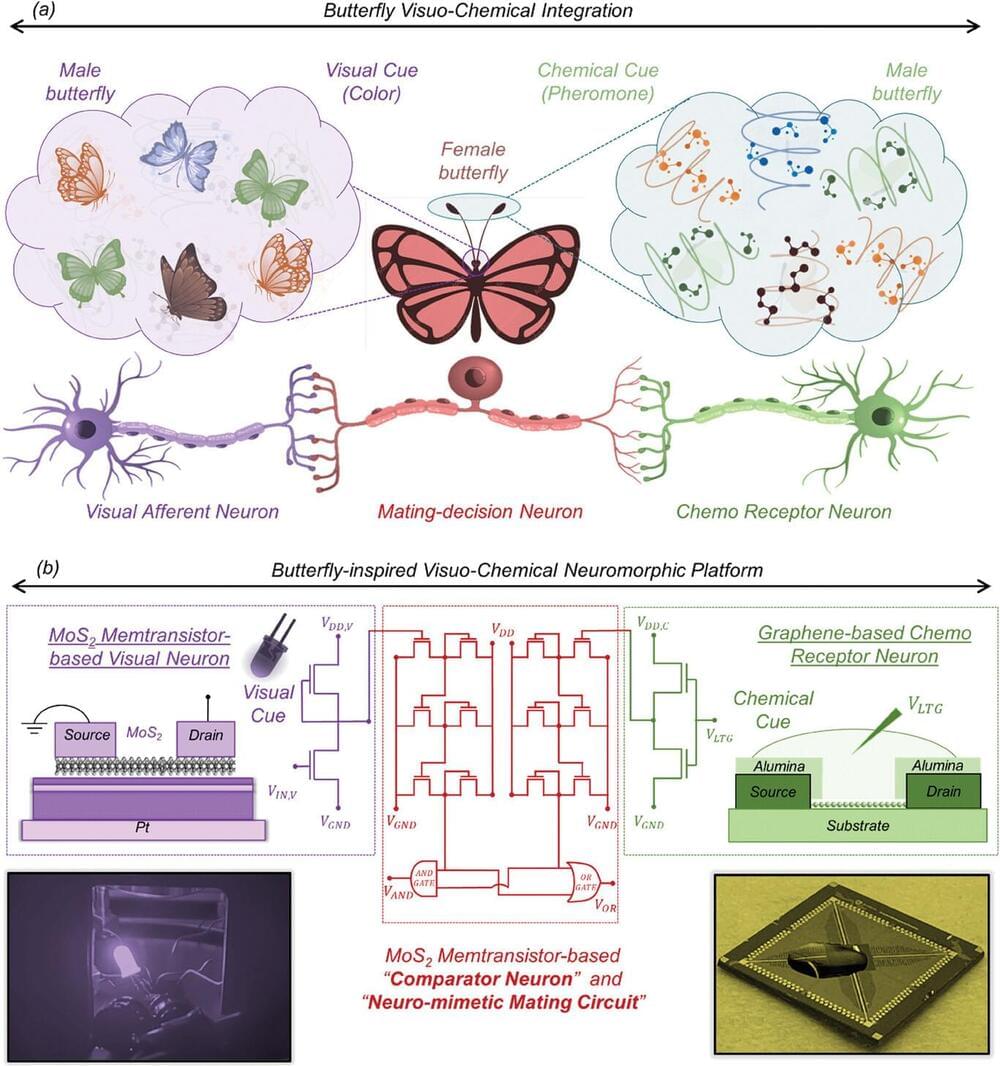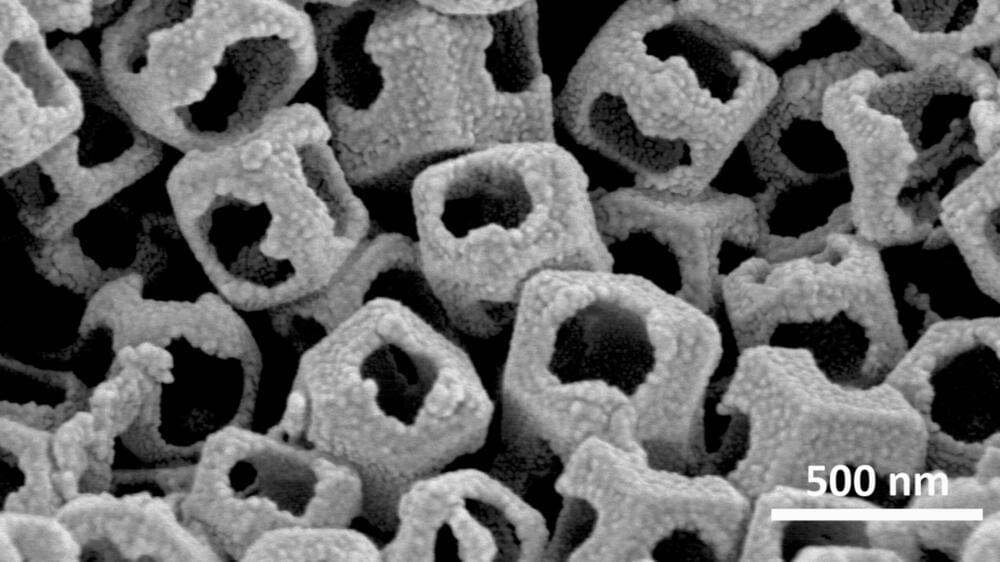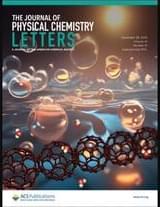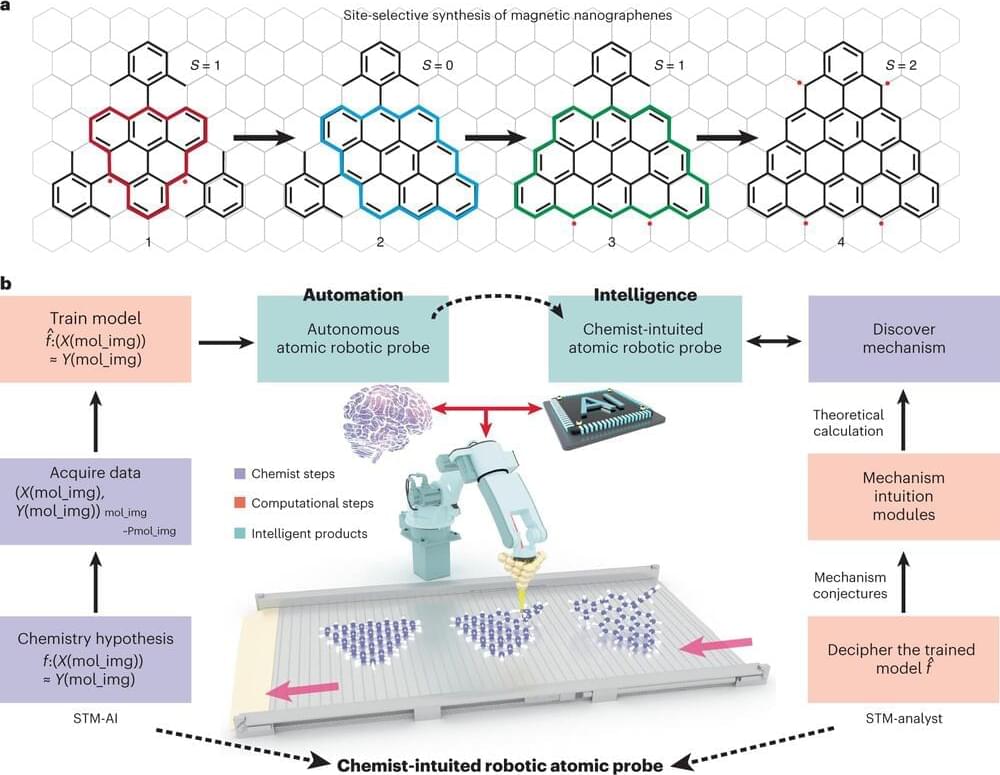Mar 8, 2024
Aluminum nanoparticles make tunable green catalysts
Posted by Dan Breeden in categories: chemistry, nanotechnology, particle physics, sustainability
Catalysts unlock pathways for chemical reactions to unfold at faster and more efficient rates, and the development of new catalytic technologies is a critical part of the green energy transition.
The Rice University lab of nanotechnology pioneer Naomi Halas has uncovered a transformative approach to harnessing the catalytic power of aluminum nanoparticles by annealing them in various gas atmospheres at high temperatures.
According to a study published in the Proceedings of the National Academy of Sciences, Rice researchers and collaborators showed that changing the structure of the oxide layer that coats the particles modifies their catalytic properties, making them a versatile tool that can be tailored to suit the needs of different contexts of use from the production of sustainable fuels to water-based reactions.
